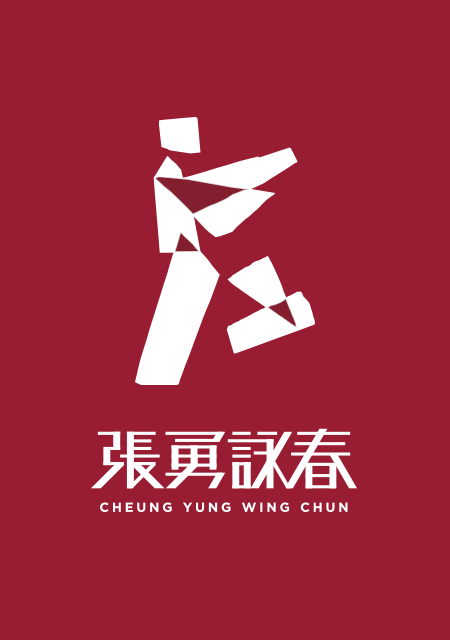等級系統
Rank System Introduction
There are 8 rank levels in Cheung Yung Wing Chun. After completing all 8 rank levels and passed the certifying exam, the student can become a China-Guangzhou Provincial Government Certified Wing Chun Junior Coach.
Twelve Moves
1.Sideward Punch. 2. Archer Punch. 3. Sideling Punch. 4. Triple Punch. 5. Triple Palm. 6. Seven Detaining Hand. 7. Inside & Outside Palm. 8. Inside and Outside Ploughing Hand. 9. Inside and Outside Deflecting Hand. 10. Flapping Hand. 11. Pinning-Hand with Steps 12. Back & Forth Palm.
Wing Chun Qigong
Qigong is an integral part of Wing Chun. Yijin means increasing the flexibility of the ligaments, strengthening the muscles, training the cardiopulmonary function, regulating the internal organs, clearing the meridians and cultivating internal qi. After practicing this set of exercises, it will be easier to learn and master the standard requirements of Wing Chun, such as shoulder drop, shoulder relaxing, shoulder extension, bringing elbows to the centerline, and hip extension. The end result of this would be superb and effortless muscle controls in speed, strength and flexibility.
Pile Standing
Pile standing is a type of internal qigong. Its purpose is to train the will, qi, energy, and form of the human body. After attaining these 4 elements your limbs and body will be much better in sync. When you move, your whole body moves; when you stop, your whole body stops and so forth. Through this internal exercise, you gain confidence and become stronger physically as well as unlocking your human potential.
SIU-LIN-TAU
Posture, stance, and wrist strength are crucial here. Posture refers to tucking the tailbone, chin and chest, stretching back, bringing shoulders down, bringing elbows to the centerline, and doing adduction stance. Wrist strength refers that when you extend your arm forward, it is the wrist that initiates the movement followed by the elbow, whereas the elbow should initiate the backward movement followed by the wrist on return. Do it calmly with steady hand, focus and qi.
Sinking Bridge
It mainly practises hip spinning, chasing, footwork and kicks. In order to achieve an instant implosive force, stance and torso have to be incorporated and used as a whole. Using an extended arm to subdue a short bridge hand, and striking while closing in with a clinging short bridge hand is the method. The practice of this form should be completed in 3 minutes.
Biu Ji
Biu Ji imitates the movements of snakes. Entanglement guards and speed of lightning-like strikes are the principal concepts of this form. This form also involves grappling and escaping techniques, and using a short bridge hand to reverse into dominant position is one of its signature moves. Wing Chun Qigong is a prerequisite if reaching the highest level of performance is the goal.
Rolling Arms and Sticking Hands
In the earliest Wing Chun, there was only “circling hands” pairing exercises, which used circular motions of the hands to train the sensation of the hands, also called the hearing of the hands, to train the tactility and bringing elbows to the centerline. Safeguarding the middle line technique: There are single circle hand, double circle hand, left and right circle hand with footwork. These hand movements imitate snake locomotion, and as long as there is a contact point between hands, you can take advantage of it and thereby attack. This is what we call circle hand, hand-on-hand practice. Circle hand is the prerequisite for sticky hand. Without this training, you only have “dead hand” because you don’t have the necessary tactility. On the contrary, if you have developed a keen sense of tactile reaction, we call it “raw hand”. Your hands have a life of its own.
“Wooden Dummy”
“Wooden Dummy” is a tool for practicing boxing. It is available in most of the Guangdong Lingnan Boxing Techniques, but it is different from each other. Wing Chun’s “Wooden Dummy” is the grounding stake, which has a certain degree of resilience so it suits best for the clinging hands style. The play style is absolutely different from that of Red Boat Yongchun’s wall-mounted scorpion.
Six and a half point pole
Zen Master Jee Zin from Shaolin Yongchun taught this pole form to the opera singers on the Red Boat. Then, Fung Siu Ching again taught this pole form to our predecessors in Foshan. Fung incorporated this pole form into Wing Chun when he was at an advanced age in order to make this style complete.
Butterfly Sword
The Butterfly Sword is a form developed by Wu Mei Shitai and Yim Wingchun combining the forms, boxing,and thorough knowledge of the system. This sword technique is like an extension of the two hands. When practicing, you must pay attention to the footwork. The double sword technique can be fast and vigorous and reach the realm of “sword and man in one”.
There are 8 rank levels in Cheung Yung Wing Chun. After completing all 8 rank levels and passed the certifying exam, the student can become a China-Guangzhou Provincial Government Certified Wing Chun Junior Coach.
